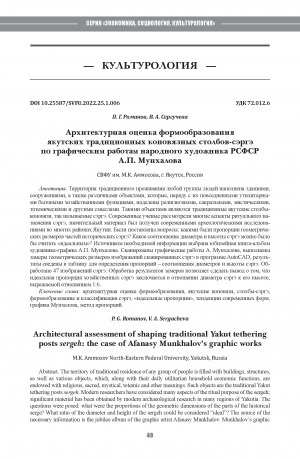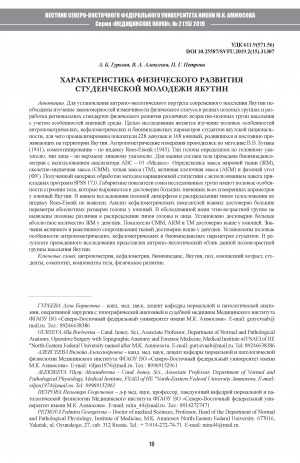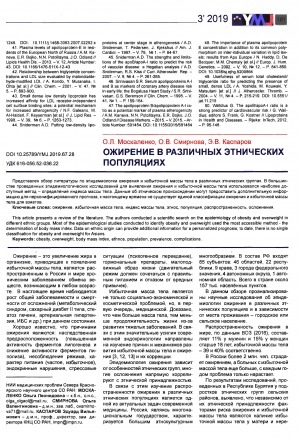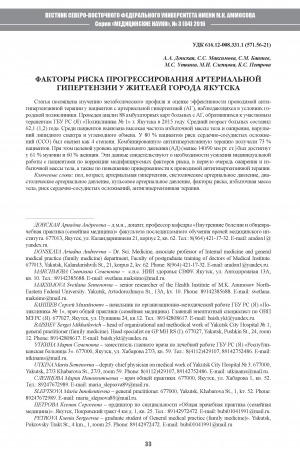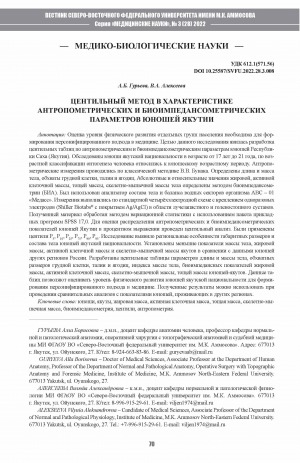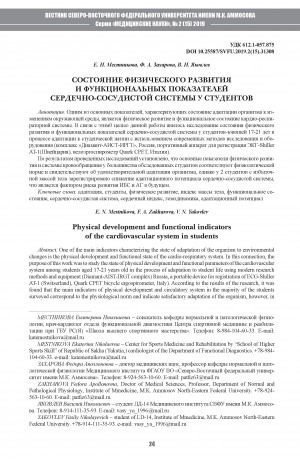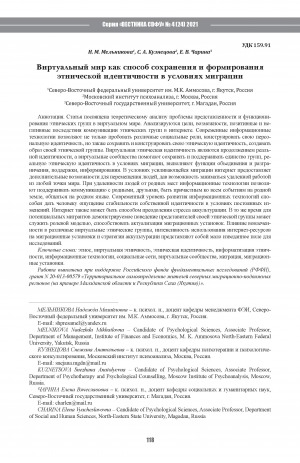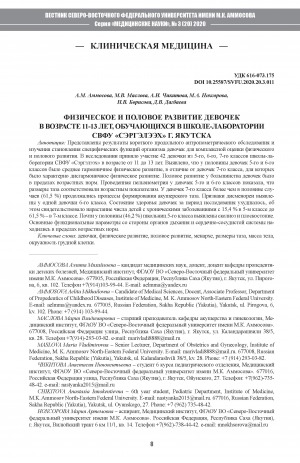Определение вариабельности пропорций тела человека, проживающего в экстремальных климатогеографических условиях Севера, является актуальным для понимания топографии внутренних органов, соотношения компонентов тела и соразмерности поверхности тела к массе тела. В Якутии научных работ, касающихся пропорций тела недостаточно, что определило актуальность данной работы. Целью работы явилось выявление этнических и половых особенностей пропорций тела студенческой молодежи Якутии. Всего было обследовано 314 девушек 16 - 20 лет и 156 юношей 17 - 21 года якутской национальности. Соматометрическое обследование проводились по методике В.В. Бунака с определением длины и массы тела. Измерены диаметр плеч, диаметр таза, поперечный диаметр грудной клетки и передне-задний диаметр грудной клетки. На верхней конечности определены следующие высоты: акромиальная, лучевая, шиловидная и пальцевая точка. На нижней конечности измерены вертельная, верхнеберцовая высоты и нижнеберцовая точка. Проведена индексная оценка физического развития (индекс относительной ширины плеч, таза, индекс длины руки и ноги, тазо-плечевой указатель, индекс Бругша). Статистическая обработка проведена с использованием пакета прикладных программ SPSS для Windows (версия 22,0). Применены параметрические и непараметрические методы статистического анализа. Установлены половые различия по всем изученным антропометрическим параметрам среди якутов. Показатели длины и массы тела, индекс руки, индекс ноги, индекс относительной ширины плеч у юношей значимо выше параметров девушек. Индекс относительной ширины таза и тазоплечевой указатель достоверно выше у девушек. По индексу относительной ширины таза среди девушек достоверно чаще регистрировалась метриопиэлия, среди юношей - стенопиэлия. Преобладающей формой корпуса у девушек была прямоугольная форма, у юношей - средняя форма корпуса. Этнические особенности выражались в меньших показателях длины тела, диаметра плеч и длины ноги у девушек якуток по сравнению с русскими девушками, проживающими в Якутии. У юношей, среди сравниваемых параметров, этническое различие наблюдается только по параметру диаметра плеч, который был значимо меньше у юношей якутов.
Determining the variability of the proportions of the human body living in extreme climatic and geographical conditions of the North is relevant for understanding the topography of internal organs, the ratio of body components, and the proportionality of the body surface to body weight. In Yakutia, there are not enough scientific papers on body proportions, which determined the relevance of this work. The aim of the work was to identify the ethnic and gender characteristics of the body proportions of Yakutian students. A total of 314 girls aged 16-20 and 156 boys aged 17-21 of Yakut ethnicity were examined. Somatometric examination was carried out according to the method of V.V. Bunak, with the determination of body length and body weight. The diameter of the shoulders, the diameter of the pelvis, the transverse diameter of the chest and the anterior-posterior diameter of the chest were measured. The following heights were determined on the upper limb: acromial, radial, styloid and finger point. The trochanter, upper tibial height and lower tibial point were measured on the lower limb. An index assessment of physical development was carried out (index of relative width of shoulders, pelvis, index of arm and leg length, pelvic-shoulder index, Brugsch index). Statistical processing was performed using the SPSS application software package for Windows (version 22.0). Parametric and nonparametric methods of statistical analysis were applied. Gender differences in all studied anthropometric parameters among the Yakuts were established. Indicators of body length and weight, arm index, leg index, index of relative shoulder width in the boys were significantly higher than the parameters of the girls. The index of the relative width of the pelvis and the pelvic index were significantly higher in girls. According to the index of relative pelvic width, metriopyelia was significantly more often registered among the girls, and stenopyelia among the boys. The predominant body shape for the girls was a rectangular shape, for the boys - the average body shape. Ethnic characteristics were expressed in lower body length, shoulder diameter and leg length in Yakut girls compared to Russian girls living in Yakutia. In boys, among the compared parameters, the ethnic difference is observed only in the parameter of shoulder diameter, which was significantly smaller in Yakut boys.



